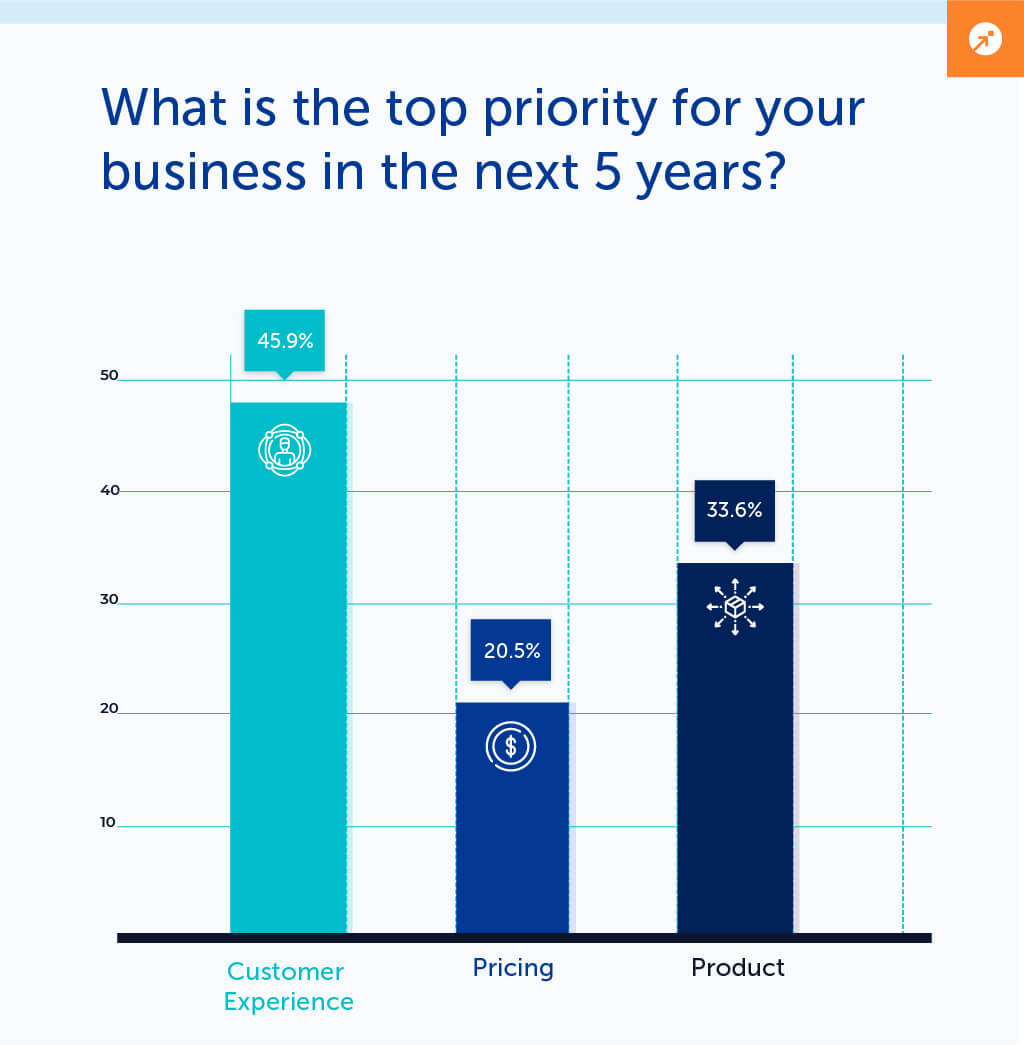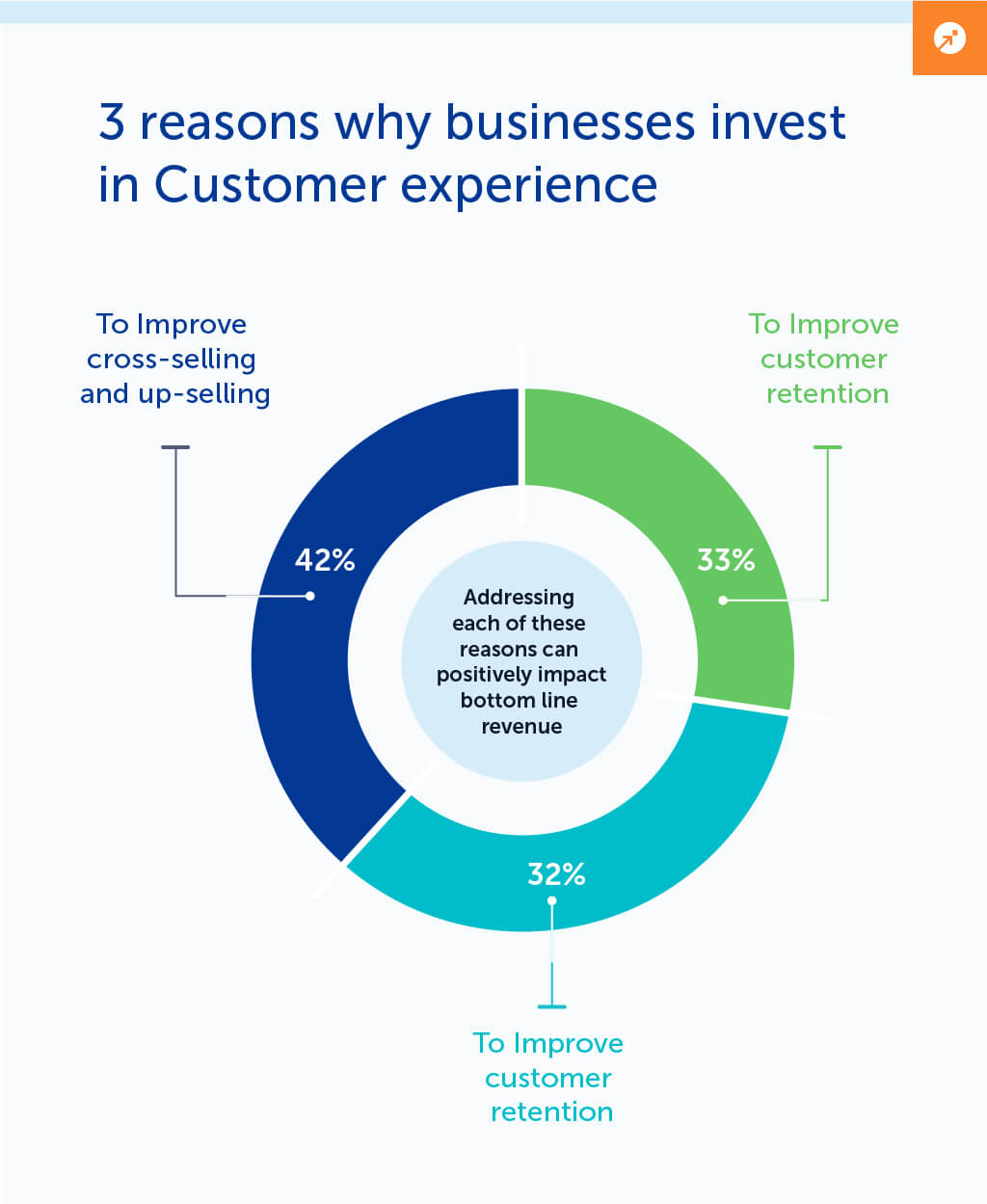We often consider customer experience (CX) as something that starts after a purchase. The customer success team improves the customer experience instead of marketing or sales. However, an effective CX strategy needs involvement from every department. It should spread across the whole customer journey.
CX starts right from the moment your potential customers search online and lasts through all subsequent experiences, including sales, after-sales calls, demos, repurchases, and word-of-mouth referrals.
Let’s take a simple example:
If you are running a software company, here’s how every department plays an important role in offering a smooth customer experience:
- The marketing team is responsible for making sure that their ideal customers should easily find them, keeping the messaging simple and with the right tone. Expectations and terminology should be aligned with the product.
- The sales team is responsible for answering prospects’ queries promptly and ensuring they have all the required prospect data to boost the sales process without bothering them. They also need to easily display or demo the product.
- Once the client is on board, the project manager and development team are responsible for keeping the sprints on-track, ensuring betas are running smoothly, and the project is delivered on time.
- The administrative team is responsible for the smooth transition of the software from your environment to the client’s environment.
- Lastly, your support team (goes without saying) is responsible for offering quick and direct support when required.
- Again, the marketing and sales team come into the picture where they need to keep in touch with the clients with the latest updates, blogs, company growth, etc. to capitalize on cross-selling and up-selling opportunities.
All departments related to customers are responsible for delivering a good customer experience. This level of responsibility and excellence requires real commitment at the corporate, administrative, and individual levels.
However, what plan do you need to manage CX and have a firm customer experience strategy?
Why is a customer experience strategy important for your business?
Customer experience is becoming the new marketing. In commoditized, highly competitive markets where product features no longer drive purchase decisions and customer loyalty, it’s how brands can truly differentiate themselves. The proliferation of mobile, social media, user-generated content, and the ‘always on’ customer means customers can experience and share their experiences of your brand across numerous touchpoints and media, more than ever before.
According to a recent survey, professionals were asked to prioritize their focus between Product, Pricing, and Customer Experience. The customer success team improves the customer experience instead of marketing or sales. Customer experience turned out to be a clear winner with 45.9% favoring it.

Businesses are also waking up to the need to improve CX for customer retention and increased revenue.

A study by Smart Insights states that 61.5% of the surveyed professionals accept that poor CX can lose customers. 52.5% understand that not focusing on CX can damage brand reputation while 43.3% of professionals believe that bad CX can mean they lose repeat business.
The good news?
If you create a flawless CX, you are likely to be successful. And it all begins with a great CX strategy.
Free eBook: The Ultimate Guide to Customer Acquisition
Seven Strategies to Improve Customer Experience
1. Reciprocity
Learning about your customer’s satisfaction levels is fundamental. But, there’s a secret to taking this to the next level for CX success – and that’s reporting your findings and plans back to your customers. Reporting back can be as simple as sending them an email outlining the key issues and explaining what actions the company will take to make their experience better. Regular interactions through client reporting help in strengthening the relationship between the company and its clients.
The fact you have listened, created a plan, and are sharing it with them will make them feel valued – and open to sharing future plans and needs with you as well (the principle of reciprocity).
2. Customer Experience Analytics
Your CX analytics will be made up of your key customer touchpoints:
› Website user data and UX analysis
› Email engagement metrics
› Pipeline metrics
› Customer transactional data
› Customer satisfaction survey results
› Net Promoter Score
› Sentiment analysis scoring
Although behavioral analytics such as Google Analytics can shed light on the online customer experience, it will only tell a piece of the story. Combine your online UX analysis with the attitudinal data collected through surveys and interviews and customer transactional data from your CRM to create an index of CX metrics for reference.
3. Deliver the Brand Promise
At the core of your brand lies the promise, the unique and resonant change you vow to deliver to your customers. Your brand promise is supported by other key branding elements that you can build into your CX:
› Tone-of-voice
› Visual identity
› Personality
Each element should work on an emotional and personal level, eliciting an emotional response above or alongside a rational one. The experience should be both functional and delightful to stand out against the competition.
Each touchpoint and activity in your CX blueprint should be planned with these branding elements in mind. Be sure that the language and tone-of-voice used across all messaging and communications are consistent and on-brand.
4. Reduce Friction
Have you faced situations during the sales process where it lacked human touch? Often it leaves a customer frustrated when they are caught in an automated loop.
Imagine if your customer calls or emails you to discuss a query and you have only set autoresponders. They are not getting the expected solution or a person to help with their unique issue. It leaves them feeling like a cog in an automated wheel. Even worse: they may get frustrated to the point where they realize it isn’t worth their time.
Here are some situations where your potential buyers or existing clients can get frustrated:
- Your prospects have questions about your product or service, and your chatbots can’t answer them. They can’t find an easy way to reach out for help.
- Your prospects approach the sales rep to discuss their requirement but end up listening to a sales pitch without personalization.
- Your customer is stuck into an autorenewal loop, and they are not able to cancel it due to many hoops to jump through.
- Your customer can’t figure out how to submit a support ticket or has no timeline for when their issue will be addressed.
5. Determine your Key Business Channels
B2B firms target their customers across a wide variety of platforms, both online and offline. Businesses with a strong omnichannel approach retain 89% of their customers while those with poor omnichannel strategies retain just 33% of their customers.
Using data analytics, you can assess if the channels you use are producing good outcomes in terms of lead generation and revenue. Which channels should you abandon, double down on, or maintain your current approach for?
6. Use of Data
The more you know about your clients, the better you can offer a smooth CX. Using firmographic and technographic data can help you do that.
Use the experience of your current customers to guide product growth. For example, can you see your customers implementing a solution that you might offer?
Then use data to pursue prospects similar to your successful clients. Knowing who is a look-a-like audience or uses competing products will create ways to gain market share by targeting the right customer base.
Many of these advantages and targets related to consumer satisfaction (upselling, cross-selling, extension, and expansion opportunities) can be realized with the proper implementation of strategic segmentation. This is why so many businesses have already integrated digital analytics into their marketing and customer research efforts.
In fact, 77% of customers have preferred, suggested, or paid extra for a brand that offers a personalized experience. Having an awareness of their revenue opportunities, the size of your organization, locations, and other critical details enables your team to provide prospects with accurate information about your offering and to personalize outreach.
While data works wonders to improve CX, the only challenge is collecting the right data in one place. Accessing separate data points from across various systems can be confusing and cause human error. To make data surveying quick, fast, and safe, SalesIntel offers all the ‘must-have’ data in one location.
With SalesIntel, you can sort the data based on firmographic, technological, and Buyer Intent data. Also, you have access to VisitorIntel where you can unmask the identities of visitors visiting your website.
7. Define Your Priorities and Create a Roadmap
How are clients engaging with your brand now? How should they interact and engage with your brand in the future? Focusing on these two points, create a road map of how the company gets from A to B.
Since B2B processes are often more complicated than B2C, taking the time to consider the effect of new technologies across the entire setup would mean that it is handled intentionally for the first time.
Understand the needs of departments and consumers and how they intersect and affect each other. Identify which resources and services you currently have to fulfill these criteria. Go slow and think through items you would normally assume.
Conclusion – Commitment is Key
The core of B2B customer experience success is a commitment to place the customer at the forefront of what the company does, how it does it, and essentially why it does it. Less than half of B2B companies are keen to please consumers and make them feel appreciated.
Without a willingness to entertain customers, it is difficult to offer an outstanding customer experience. The starting point is to ingrain a customer-centric approach into each department. This is only possible if your team can access the must-have customer data in one place.
Want to set a data foundation for your CX strategy? SalesIntel gives you access to millions of human-verified contacts and enriched data in a few clicks.




